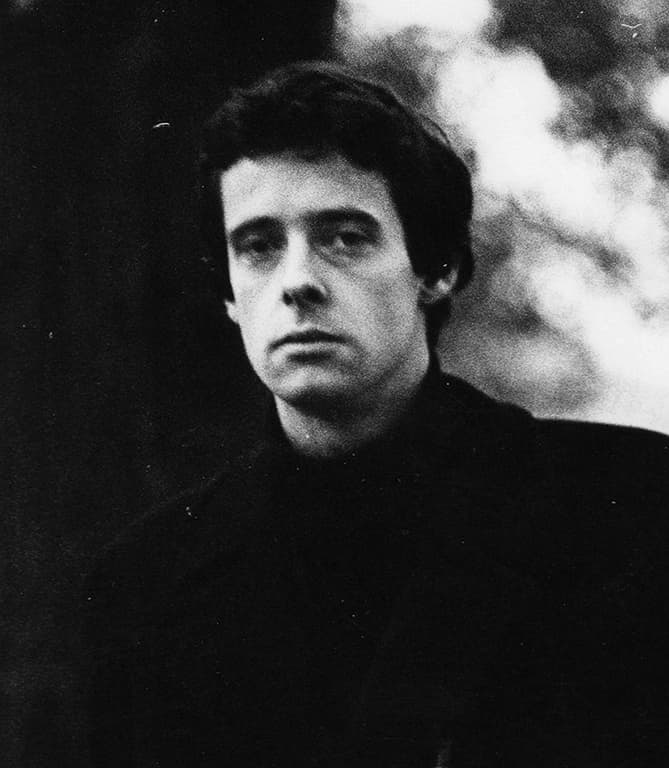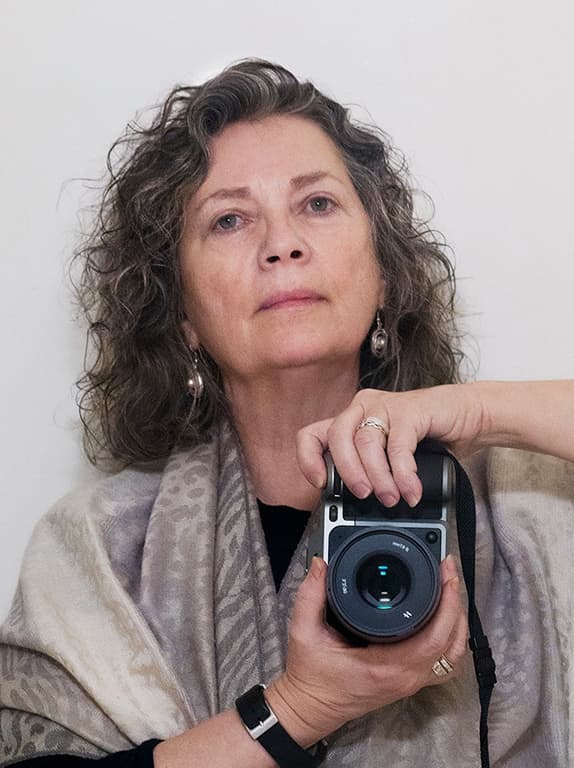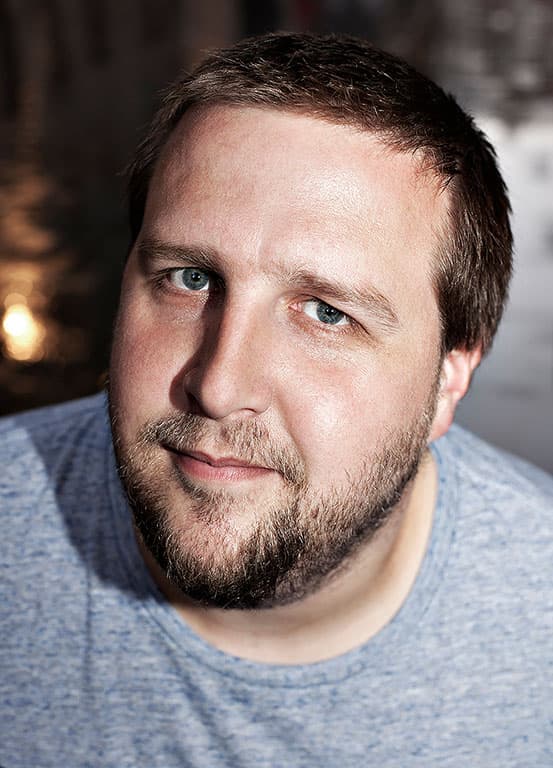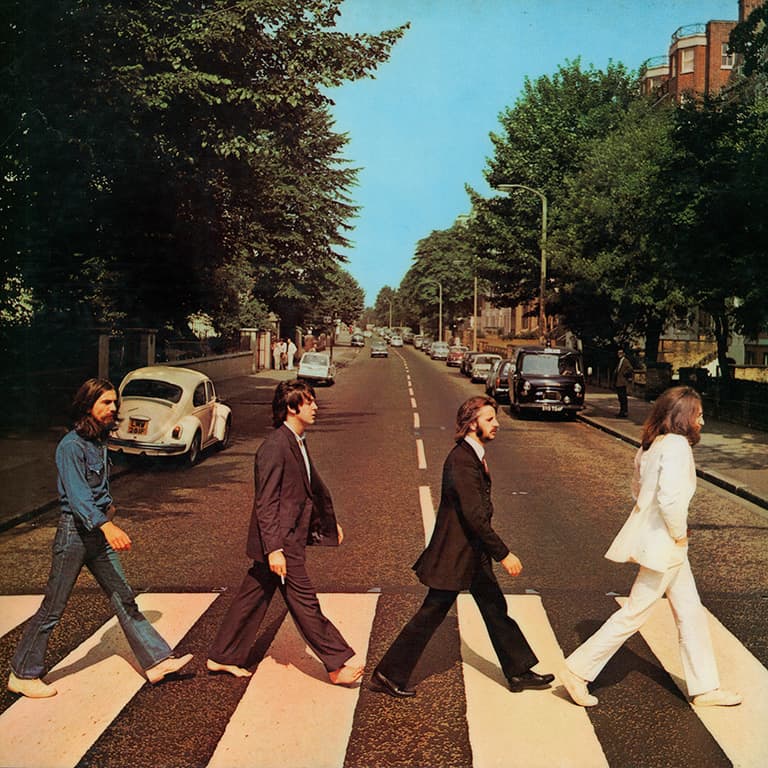Fact file: Abbey Road by The Beatles
Musicians: John Lennon, Paul McCartney, George Harrison, Ringo Starr, Billy Preston, George Martin
Released: 26 September 1969 (Apple Records)
Best chart performance: No.1 UK Albums Chart (the album entered the chart at No.1) and No.1 US Billboard Top LPs chart. The LP also reached No.1 in Australia, Canada, The Netherlands, Norway, Sweden, Spain and West Germany. Sales: Over 31 million worldwide
Fascinating fact: The final track of the album, The End, was the last time all four of The Beatles recorded a track together – this was on 18 August 1969. John Lennon privately left the group six days before the release of the album, while Paul McCartney publicly confirmed he was no longer in The Beatles
on 9 April 1970.

A photograph taken by the late Iain Macmillan (below) from a stepladder in the middle of Abbey Road, London, on 8 August 1969 remains one of rock and roll’s most iconic images over half a century later. Using a Hasselblad 500C camera, with a Zeiss Distagon 50mm f/4 lens, Macmillan only took six shots of the Beatles as they walked across the crossing near EMI Studios, where the group usually recorded. The visual idea for the shoot came from Paul McCartney.

In a 1989 interview with The Guardian newspaper, Macmillan recalled, ‘We hired a policeman to hold up traffic while I was up on the ladder. A few days before the shoot, he [Paul] drew a sketch of how he imagined the cover, which we executed almost exactly that day. ‘I took a couple of shots. We let some of the traffic go, then they walked across the road the other way, and I took a few more. The one chosen was number five of six. It was the only one that had their legs in a perfect ‘V’ formation.’
It was a straightforward shoot that took little more than 10 minutes. Macmillan commented, ‘That photo has been called an icon of the 1960s. I suppose it is. I think the reason it became so popular is its simplicity. Also it’s a shot people can relate to. It’s a place where people can still walk.’ Macmillan also shot an Abbey Road road sign, which was used on the album’s back cover.
Short schedule
The next step in the process was down to John Kosh, who John Lennon had hired as creative director for the band’s label Apple Records. In 1969, Kosh was working up the design for the next Beatles album Get Back – later renamed Let It Be – when he suddenly found out it was being replaced on the release schedule by Abbey Road. Kosh recalls, ‘It was literally a Monday gig and artwork had to be sent to the printer by Wednesday. It was that fast. Iain [Macmillan] had produced this series of photographs and we were poring over them with a loupe, finding which was the best one.

The back of the iconic album
Taking things into consideration like, “does it matter that Paul’s out of step?” Then we decided that this [picture] must be the one and both of us were worried if this was good enough [for an album cover]. I was thinking, “Shit, we could have done this better”. It all had to be done in a huge rush.’ Arguably Kosh’s biggest contribution to the front cover design of Abbey Road was his bold decision to omit the name of the group and the title of the record.
He explains, ‘I got a phone call from Sir Joseph Lockwood (chairman of EMI, Apple Records’ parent company) at some ungodly hour and his string of invective with his high-class accent made it even worse. The next day I met George [Harrison] and told him what had happened. George said, “Oh, screw him. We’re The Beatles.”’ Kosh has one regret about his work on Abbey Road – cashing the cheque he got for it.

A lot of Iain Macmillan’s equipment, including the Hasselblad 500C used to photograph the cover of Abbey Road, sold at a Bonhams auction in October 2020 for over £35,000
‘It was for £700 and was signed by John [Lennon] and Paul [McCartney]. I cashed it because I had to pay the rent. It was a treasure because John and Paul weren’t supposed to be talking to each other at the time; it was right in the middle of the [Beatles] split. The press were having a field day saying they’d broken up, but I was sitting in Abbey Road studios watching John and Paul cutting The Ballad of John and Yoko – they were joking and having a great time, but they weren’t supposed to be talking… and, like an idiot, I cashed the cheque!’
Our panel on Abbey Road

Jill Furmanovsky: I was just 16 when Abbey Road came out and the music and cover still mean a lot to me. As an image, the cover photo is near on perfect. Just a few frames shot by Iain Macmillan on a summer’s day, it radiates warmth. The graphics were uncluttered by much text, so you could dive into the image and be there. This is a spiritual home for music.

Peter Neill: This cover always stood out, as if it belonged in a book about great technique. The lead-in lines provided by the crossing, the trees and the road draw you into the photograph. These, combined with the symmetry of the walk, are a brilliant example of opportunistic photography making something loved
by millions.

Mat Snow: Conceptual mastermind John Kosh started his album design career on a peak, brilliantly illustrating the Fab Four’s intriguing paradoxes: united but individual, famous but enigmatic, ordinary but exotic. Iain Macmillan had just 10 minutes up a stepladder to get the famous shot. The Beatles on Abbey Road: no words needed.
About our panel of judges
Some of the finest names in music and photography chose this series’ covers:
Janette Beckman, Jason Bell, Ed Caraeff, Andy Cowles, Kevin Cummins, Andy Earl,Jill Furmanovsky, Christie Goodwin, Peter Hook, Simon Larbalestier, Gered Mankowitz, Dennis Morris, Peter Neill, Aubrey ‘Po’ Powell, Rankin, Jamel Shabazz, Mat Snow, Howard Wakefield, Kirk Weddle, Rachael Wright








